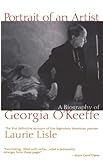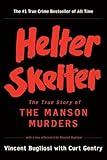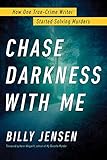I spent most of the year living in a small town in Oregon where I read a lot of student work and finished my MFA thesis. There I read my first but not last book by Octavia E. Butler, Kindred. I borrowed Octavia’s Brood: Science Fiction Stories from Social Justice Movements, from a graduate employee union organizer, read some stories, and assigned one to my introduction to fiction class. adrienne maree brown, one of the editors of the anthology and author of Pleasure Activism: The Politics of Feeling Good, gave a keynote for an on-campus conference coordinated by community organizers, and the talk ended with her encouraging the audience to howl together in honor of the full moon. After her Friday night talk, I walked out into the cool air and saw cherry blossoms lit by street lamps.

 At the end of June, I was back in Los Angeles and sitting on Rocío Carlos’s porch and talking to Chiwan Choi, who told me that Los Angeles Public Library had opened up the Octavia Lab. I was back in L.A., where Butler’s archives are held at the Huntington, and telling Chiwan that I hoped someone is writing Butler’s biography because not one yet exists. I suspect the reason one has yet to exist has to do with inequities in publishing. (If you read this and you know of a published biography, please let me know.) Before I was in L.A., I stayed in San Francisco for a couple of days and met with my friend Dan Weiss who now works at McSweeney’s and he told me about their forthcoming issues. Later, back in L.A., I enjoyed their artfully designed Twenty-First Anniversary Issue, featuring 65 contributors, including Claudia Rankine, Terrance Hayes, and Morgan Jerkins.
At the end of June, I was back in Los Angeles and sitting on Rocío Carlos’s porch and talking to Chiwan Choi, who told me that Los Angeles Public Library had opened up the Octavia Lab. I was back in L.A., where Butler’s archives are held at the Huntington, and telling Chiwan that I hoped someone is writing Butler’s biography because not one yet exists. I suspect the reason one has yet to exist has to do with inequities in publishing. (If you read this and you know of a published biography, please let me know.) Before I was in L.A., I stayed in San Francisco for a couple of days and met with my friend Dan Weiss who now works at McSweeney’s and he told me about their forthcoming issues. Later, back in L.A., I enjoyed their artfully designed Twenty-First Anniversary Issue, featuring 65 contributors, including Claudia Rankine, Terrance Hayes, and Morgan Jerkins.





 In July, I stayed in a one-bedroom casita in Santa Fe, spent most of time journaling and meditating and practicing yin yoga at a yoga studio a block away. My friend visited me, and we took a tour of O’Keeffe’s house and I started reading Laurie Lisle’s biography of O’Keeffe, Portrait of an Artist. I wanted to read every biography of her and then realized that maybe I really enjoy biographies focused on artists. This year, Love Unknown, an Elizabeth Bishop biography, was published, and I want to read and gift it to avid Bishop readers. In the one-bedroom casita, I sped-read Eve Babitz’s Sex and Rage and bookmarked Rachel Vorona Cote’s article “Eve Babitz Could Capture Only One Side Of L.A.,” which argues that Babitz’s work is “saturated with a carelessness afforded by whiteness and beauty.” From a used bookstore, I bought a beautiful copy of Julio Cortázar’s Cronopios and Famas.
In July, I stayed in a one-bedroom casita in Santa Fe, spent most of time journaling and meditating and practicing yin yoga at a yoga studio a block away. My friend visited me, and we took a tour of O’Keeffe’s house and I started reading Laurie Lisle’s biography of O’Keeffe, Portrait of an Artist. I wanted to read every biography of her and then realized that maybe I really enjoy biographies focused on artists. This year, Love Unknown, an Elizabeth Bishop biography, was published, and I want to read and gift it to avid Bishop readers. In the one-bedroom casita, I sped-read Eve Babitz’s Sex and Rage and bookmarked Rachel Vorona Cote’s article “Eve Babitz Could Capture Only One Side Of L.A.,” which argues that Babitz’s work is “saturated with a carelessness afforded by whiteness and beauty.” From a used bookstore, I bought a beautiful copy of Julio Cortázar’s Cronopios and Famas.
After Hernán Diaz read my (unpublished) fiction at Bread Loaf in 2016, he recommended I read Cortázar, specifically this title. So I’m reading it. Slowly. On mornings that I work on my fiction, I read one story from the collection. Sometimes I just read a paragraph. I’m taking my time with it. Because it’s a special book with special stories, unlike any other I’ve read. Because it’s strange, it’s delightful. Because it’s my cure for days filled with despair and bleakness and, in this way, reminds me of the power of fiction. Because Cronopios and Famas is a book that inspires me to get out of bed and sit at my writing desk and do the work. Because you only get one chance to read a book for the first time, and when you find a book that affects you like Cronopios and Famas affects me, you take your time with it. In Santa Fe, I made friends with a yoga teacher who would bring her dog to classes, and on one of my last nights in that city, I went to dinner with her and a Dutch-Canadian visual artist who had recently moved to the area.


 In August, I spent two weeks at Bread Loaf, focusing on coordinating events in the Little Theater, participating in a writing workshop led by Ravi Howard, and socializing with writers. I bought multiple copies of De’Shawn C. Winslow’s In West Mills for myself and family and friends. I loved falling into the world that Winslow created in his debut novel, and look forward to reading his second novel. Bread Loaf’s assistant director Lauren Francis-Sharma organized a private screening of “Toni Morrison: The Pieces I Am” in the Little Theater. Morrison was at Bread Loaf in 1977, and her archived talk is available online. When I was back home, I read Morrison’s Playing in the Dark: Whiteness and the Literary Imagination, which has been on my to-read list for years, and implore every writing instructor to read this book as well as anyone interested in, studying, or writing literary criticism and fiction. After I finished reading Playing in the Dark, I started reading Baldwin’s Notes of a Native Son.
In August, I spent two weeks at Bread Loaf, focusing on coordinating events in the Little Theater, participating in a writing workshop led by Ravi Howard, and socializing with writers. I bought multiple copies of De’Shawn C. Winslow’s In West Mills for myself and family and friends. I loved falling into the world that Winslow created in his debut novel, and look forward to reading his second novel. Bread Loaf’s assistant director Lauren Francis-Sharma organized a private screening of “Toni Morrison: The Pieces I Am” in the Little Theater. Morrison was at Bread Loaf in 1977, and her archived talk is available online. When I was back home, I read Morrison’s Playing in the Dark: Whiteness and the Literary Imagination, which has been on my to-read list for years, and implore every writing instructor to read this book as well as anyone interested in, studying, or writing literary criticism and fiction. After I finished reading Playing in the Dark, I started reading Baldwin’s Notes of a Native Son.
I began working for a true crime writer and bestselling memoirist who recommended that I read Helter Skelter. I knew very little about the Manson family or the murders and admittedly had little interest in them, but found Helter Skelter to be a page turner. The book is well-written and structured, and Vincent Bugliosi and Curt Gentry’s matter-of-fact style and detailed knowledge of the case and the cast of characters was propulsive. On a flight from Boston to Los Angeles, I discovered Helter Skelter pairs well with Didion’s essay “The White Album.” The true crime writer and memoirist asked me to read Billy Jensen’s Chase Darkness with Me: How One True-Crime Writer Started Solving Murders for research purposes. I recommend this title to anyone who is interested in reading about true crime or serial killers. It’s not exactly my field of interest and tends to disturb me in the most depressive- and anxiety-inducing of ways. When those moods come—and they do—I reach out to friends, and now remember one Monday night in October when Peter Woods, Rocío Carlos, and Rachel McLeod Kaminer responded to my texts. We gathered at a bar on Spring Street in downtown L.A. when Sara Borjas was bartending, and I spent hours with them, my spirit lifting.
Reading true crime and researching serial killings has me thinking of a section of “True War Stories,” an essay written by Viet Thanh Nguyen. Nguyen writes:
Opening a refrigerator is a true war story. So is paying one’s taxes. Complicity is the truest war story of all…Americans do not wish to confront this domestic horror directly, which is why they substitute for it stories of zombies and serial killers and the like. Fictional violence and monstrous horror are easier to stomach than understanding how opening our refrigerator or watching a football game connects us to war, which is not thrilling at all. The true war story is not only that war is hell…The true war story is also that war is normal, which is why we are always going to war…War involves all of us, and that is more discomfiting than any horror story over here or blood-and-guts story over there.
These days I often think of lines written or stated by Nguyen, because I’m reading approximately 60 essays and op-eds written by him and over 200 interviews with him.
 In October, I attended John Leguizamo’s “Latin History for Morons” with my 15-year-old niece who is a Leguizamo superfan. We waited in a long line so Leguizamo could sign Ghetto Klown, and she was elated after meeting him. Most of the time my niece experiences reading as a chore or schoolwork, but she started and finished the graphic novel memoir in less than 24 hours. My sister sent a photo of my niece walking and reading the book in the halls of her high school. As I read Leguizamo’s memoir, illustrated by Christa Cassano and Shamus Beyale, I focused on visual narration, the structure and plot, and identity politics and inequities in Hollywood. In 2020, a paperback edition of Ghetto Klown will be released with an introduction by Lin-Manuel Miranda.
In October, I attended John Leguizamo’s “Latin History for Morons” with my 15-year-old niece who is a Leguizamo superfan. We waited in a long line so Leguizamo could sign Ghetto Klown, and she was elated after meeting him. Most of the time my niece experiences reading as a chore or schoolwork, but she started and finished the graphic novel memoir in less than 24 hours. My sister sent a photo of my niece walking and reading the book in the halls of her high school. As I read Leguizamo’s memoir, illustrated by Christa Cassano and Shamus Beyale, I focused on visual narration, the structure and plot, and identity politics and inequities in Hollywood. In 2020, a paperback edition of Ghetto Klown will be released with an introduction by Lin-Manuel Miranda.
I’m thinking about what I’ll read in 2020. I haven’t been in a book club since I created a book club for 826LA volunteers almost a decade ago, and am considering joining Los Angeles Gay Lady Book Club, curated by a friend and ProDomme. I’m creating a list of writers who I want to interview in 2020—and, as always, my goal is to read more than last year.
More from A Year in Reading 2019
Don’t miss: A Year in Reading 2018, 2017, 2016, 2015, 2014, 2013, 2012, 2011, 2010, 2009, 2008, 2007, 2006, 2005









